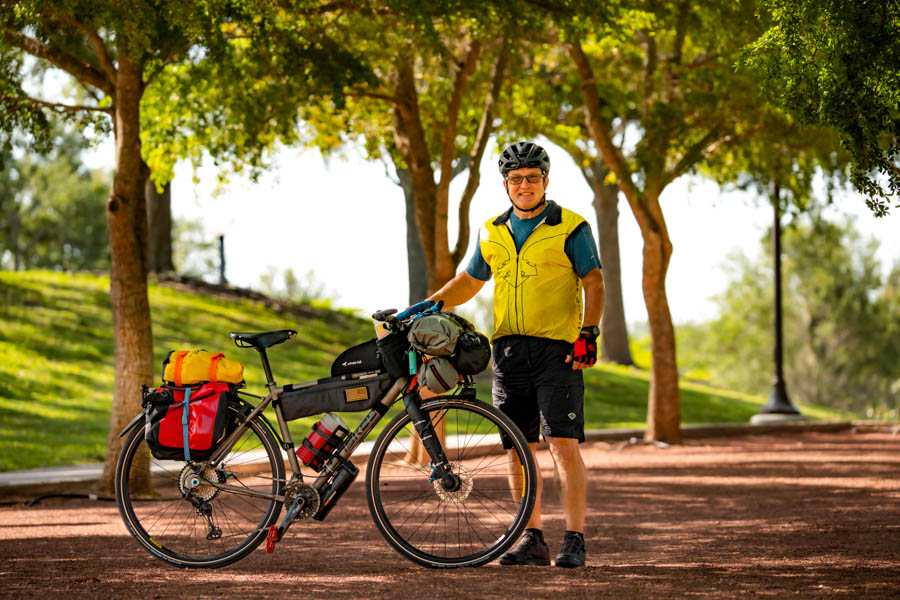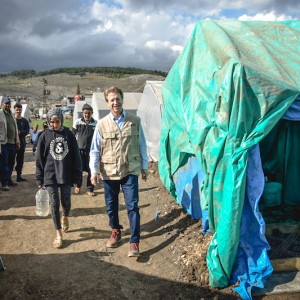The first question everyone asks Mark Hughes when they learn he’s planning a 4,200-mile bike ride across America this summer is . . . “Why?” The 59-year-old semi-retired IT engagement manager originally from Michigan says he just really enjoys a challenge when it comes to fitness. Hughes has competed in mountain bike races, road races, iron man competitions and tennis tournaments and most recently in 2021, has hiked the Appalachian Trail.
The latest endeavor for Hughes involves a summer bike trip with eight to ten other bikers he met through Adventure Cyclist magazine that begins in Astoria, Oregon in June 2023. From there, the group will ride the Lewis and Clark Trail and take the northern route from Oregon to Wisconsin, hopping on a ferry to cross Lake Michigan into Lower Michigan, then ride through Canada, the northern side of Lake Erie, New York and finally Maine, where they expect to end their trip this August.
Hughes will ride a touring bike that he built himself by watching YouTube videos and reading cycling articles. He used a Linskey titanium frame for the best performance and strength and will load it with all kinds of hanging bags and gadgets for the trip. Added to that preparation is a five-day-per-week, 150-mile training regimen on a loaded bike weighing about 55 lbs. He’s been training since early January on the Legacy Trail. While Hughes says that the loaded bike felt very heavy at first, now that he’s conditioned, it is easier to ride.
The trip will take about 80 days in total riding between 60 and 80 miles a day, depending on the speed of riders. The entire trip is self-contained, meaning the riders will have camping gear, food and water on their bikes, planning to stop at campsites, hotels, hostels and warm showers which are private homes that people open up to cyclists. For safety, Hughes will use a Garmin bike radar with a Garmin head that will give him stats, a rear radar that attaches to the back of the bike with video and audio alerts for cars coming up from behind, a dynamo hub that generates electricity from the spinning wheels, allowing for battery charging and lights and rain gear for bad weather. “We’ll wake up, set a goal for the day, and as we go, we’ll find stopping points,” says Hughes. “It’s not 100 percent planned, but we'll be on the Northern Route on established trails.”










